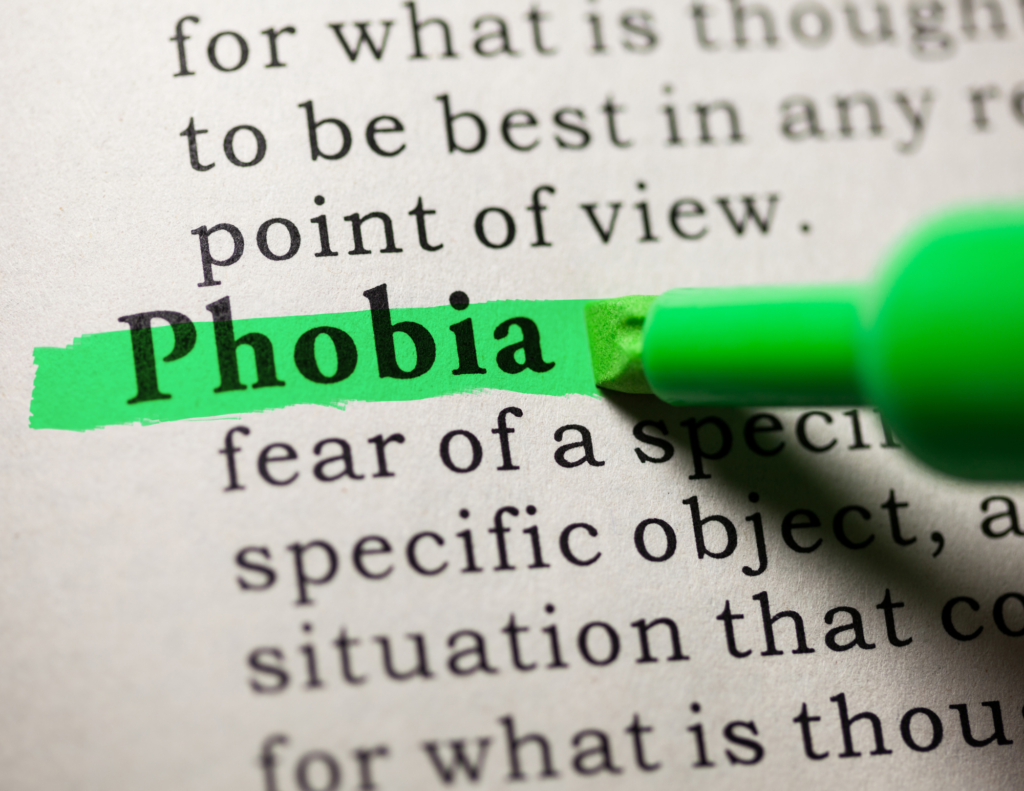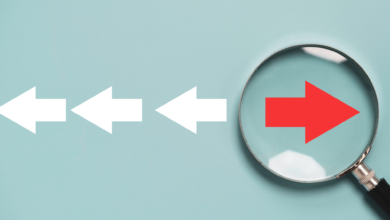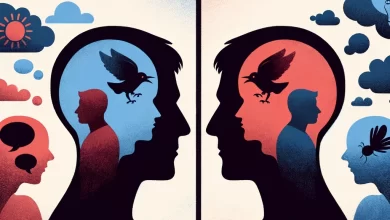Understanding Phobias: Causes and Treatments

Do you ever find yourself paralyzed with fear at the sight of spiders, heights, or flying? Or perhaps you experience an overwhelming sense of dread in social situations? If so, you may be suffering from a phobia. Phobias are more than just temporary fears; they are intense and uncontrollable anxiety reactions that can significantly impact your daily life.
In this article, we will delve into the world of phobias, exploring their causes, different types, and available treatments. Whether you’re curious about the origins of your own phobia or seeking ways to overcome it, read on to gain a deeper understanding of phobias and discover effective strategies to manage these anxieties.
Key Takeaways:
- Phobias are intense and irrational fears that can disrupt a person’s life.
- There are various types of phobias, including specific phobias and agoraphobia.
- Phobias can be caused by a combination of genetic and environmental factors.
- Effective treatments for phobias include cognitive-behavioral therapy, exposure therapy, and medication.
- Seeking help from healthcare professionals is crucial in managing and overcoming phobias.
What are Phobias?
A phobia is an intense and irrational fear reaction that can be triggered by a specific object, situation, or place. Phobias are a type of anxiety disorder, with specific phobia being the most common diagnosis. Agoraphobia is a separate diagnosis that involves the fear of being in public areas or spaces. Phobias can cause overwhelming fear and anxiety, making it difficult for individuals to function in everyday situations. While people with phobias may recognize that their fears are excessive, they are unable to control or manage them effectively.
Types of Phobias
Phobias can be categorized into different types based on the specific trigger. Let’s explore some of the most common phobia categories:
1. Animal Phobias
Animal phobias involve an intense fear and anxiety towards specific animals. Some examples of animal phobias include arachnophobia (fear of spiders), ophidiophobia (fear of snakes), and cynophobia (fear of dogs). These phobias can stem from past traumatic experiences or learned behaviors.
2. Fear of the Natural Environment
Phobias related to the natural environment encompass a wide range of fears such as acrophobia (fear of heights), claustrophobia (fear of confined spaces), and agoraphobia (fear of open spaces). These phobias often result from a combination of genetic predisposition and past negative experiences.
3. Phobias Related to Blood, Medical Procedures, or Injuries
Some individuals experience phobias associated with blood, medical procedures, or injuries. Hemophobia is the fear of blood, while trypanophobia is the fear of needles. These phobias can make it challenging for individuals to undergo routine medical procedures or manage injuries effectively.
4. Phobias Related to Specific Situations
Phobias can also be triggered by specific situations. For example, aerophobia is the fear of flying, while arachibutyrophobia is the fear of peanut butter sticking to the roof of the mouth. These phobias often arise from personal experiences, cultural influences, or other underlying factors.
It’s important to note that the range of phobias is vast, and each individual may have unique fears that fall into one or more of these categories. Understanding the specific type of phobia is crucial for developing appropriate treatment plans and strategies to overcome these fears.
Prevalence of Phobias
Phobias are not very common, with specific phobias affecting around 8% to 12% of people in the U.S. The prevalence rates vary depending on age and location, with higher rates observed in children and adolescents. Worldwide, between 3% and 9% of children meet the diagnostic criteria for specific phobia. The prevalence rates tend to decrease in older adults, ranging from 3% to 5% for individuals aged 65 and older. Women and individuals assigned female at birth (AFAB) are twice as likely to have specific phobia compared to men and individuals assigned male at birth (AMAB).
Causes of Phobias
Phobias can develop due to a combination of various factors, including bad experiences, genetics, and learned behavior.
Bad Experiences
A significant cause of phobias is the experience of traumatic events or panic attacks. These intense and distressing occurrences can leave a lasting impression on an individual’s mind, leading to the development of a specific phobia. For example, a person who has experienced a dog bite may develop a phobia of dogs. Similarly, someone who has had a frightening experience while flying may develop a fear of flying.
Genetics
Research suggests that there may be a genetic predisposition to anxiety disorders, including phobias. Certain genes or genetic variations may make some individuals more susceptible to developing extreme fears and anxieties. However, it is important to note that genetics alone do not determine the development of phobias, and environmental factors also play a significant role.
Learned Behavior
Learned behaviors can also contribute to the development of phobias. Individuals may model their fears after observing someone else’s phobia or anxiety. For example, a child who witnesses their parent’s extreme fear of spiders may develop a phobia of spiders themselves. This form of learning is known as vicarious learning, and it can influence the development of specific phobias.
Brain Function and Structure
Research has shown that certain phobias may be associated with specific patterns of brain activity and structure. The amygdala, a part of the brain involved in processing emotions and fear responses, may play a role in the manifestation of specific phobias. Individuals with phobias may exhibit heightened activity in the amygdala when exposed to the object or situation that triggers their phobia.
While the exact causes of phobias may vary from person to person, a combination of bad experiences, genetic predisposition, learned behavior, and brain function can contribute to their development.
Risk Factors for Phobias
Several risk factors may contribute to the development of a phobia. Age, genetic predisposition, temperament, and past experiences can increase an individual’s likelihood of developing an intense fear and anxiety towards certain objects, situations, or places.
Age
Phobias often develop in childhood or adolescence. During these formative years, individuals may encounter experiences that shape their perceptions and trigger a fear response. The onset of specific phobias tends to occur early in life, with certain fears diminishing or changing over time.
Relatives
Having a close relative with a phobia or anxiety disorder can heighten the risk of developing a phobia. Research suggests a genetic component to anxiety disorders, including phobias. While not all individuals with a family history of phobias will develop one, there is an increased likelihood.
Temperament
Temperament plays a role in phobia development. Some individuals may have a higher sensitivity to anxiety or exhibit a negative disposition, making them more susceptible to developing phobias. These personality traits can make certain individuals more prone to fear and anxiety responses in general.
Experiences
Experiences play an essential role in phobia development. Traumatic events, such as being trapped in a confined space or experiencing a life-threatening situation, can lead to the development of specific phobias. It is believed that these experiences create a lasting imprint in the individual’s memory, associating certain stimuli with fear and danger.
Understanding these risk factors can help healthcare professionals identify individuals who may be more vulnerable to developing phobias. Early identification and intervention can be crucial in managing and treating phobias effectively.
Symptoms of Phobias
A phobia is characterized by an intense and irrational fear or anxiety when exposed to the object or situation that triggers the phobia. Individuals with phobias may experience panic attacks accompanied by physical reactions such as a rapid heartbeat, shortness of breath, sweating, and trembling. These symptoms can be overwhelming and debilitating.
Panic attacks are a common symptom of phobias. During a panic attack, individuals may feel a sense of impending doom, have difficulty breathing, experience chest pain or discomfort, and have a fear of losing control or going crazy. The physical reactions during a panic attack can heighten the individual’s anxiety and make them feel as though they are in grave danger.
In addition to panic attacks, individuals with phobias often exhibit avoidance behaviors. They may go to great lengths to avoid situations or places that could potentially trigger their phobia. For example, someone with a fear of flying may avoid air travel altogether, limiting their ability to travel and experience new things.
These avoidance behaviors can significantly impact a person’s daily life, causing disruptions in their work, social interactions, and relationships. The fear and anxiety associated with phobias can create a constant state of unease and distress, making it challenging for individuals to engage in activities they once enjoyed.
“I remember when I had my first panic attack related to my phobia. My heart started racing, and I felt like I couldn’t breathe. It was so terrifying that I now avoid anything that reminds me of that experience. It’s taken a toll on my life, and I often feel isolated and limited in what I can do.” – Sarah, a person living with a phobia
It’s important to note that phobias can vary in intensity and impact. While some individuals may experience mild symptoms that do not significantly interfere with their daily activities, others may have more severe phobias that limit their ability to function in various situations.
If you or someone you know is experiencing symptoms of a phobia, it’s essential to seek professional help. A healthcare provider can evaluate the symptoms and provide appropriate treatment options to manage and overcome the phobia.
Symptoms of Phobias
| Common Symptoms | Interferes with Daily Activities | Physical Reactions | Avoidance Behaviors |
|---|---|---|---|
| Intense fear or anxiety | Yes | Rapid heartbeat, shortness of breath, sweating, trembling | Going to great lengths to avoid triggers |
| Panic attacks | Yes | Sense of impending doom, difficulty breathing, chest pain | Avoiding situations or places |
| Avoidance behaviors | Yes | N/A | Limiting activities and experiences |
Symptoms of phobias can be distressing, but with proper treatment and support, individuals can learn to manage and overcome their phobias, leading to improved overall well-being.
For more information on symptoms of phobias, visit the Mayo Clinic website.
Treatment Options for Phobias
When it comes to treating phobias, there are several effective options available. These treatments can help individuals overcome their fears and regain control of their lives. The three main treatment approaches for phobias are cognitive-behavioral therapy (CBT), exposure therapy, and medication.
Cognitive-Behavioral Therapy (CBT)
Cognitive-Behavioral Therapy (CBT) is a widely used therapeutic approach for phobias. It focuses on identifying and modifying negative thoughts and behaviors associated with the phobia. CBT helps individuals understand the irrational nature of their fears and teaches them practical strategies to challenge and overcome them. Through targeted exercises and techniques, CBT aims to change the individual’s thought patterns and reactions to the phobia, ultimately reducing anxiety and improving overall well-being.
Exposure Therapy
Exposure therapy is another effective treatment for phobias. It involves gradually exposing individuals to the feared object or situation in a controlled and supportive environment. The goal of exposure therapy is to reduce anxiety and desensitize individuals to their phobia triggers. By repeatedly facing their fears, individuals can learn that their anxieties are unfounded and that they are capable of coping with and overcoming their phobias. Exposure therapy can be conducted in various forms, such as systematic desensitization, virtual reality exposure, or in vivo exposure.
Medication
Medication is sometimes prescribed for individuals with phobias, particularly when the symptoms are severe or significantly interfere with daily functioning. Antidepressants and anti-anxiety medications can be used to manage the symptoms of phobias. These medications work by regulating brain chemicals, reducing anxiety, and promoting relaxation. It’s important to note that medication alone does not address the underlying causes of phobias, but it can be a valuable complement to therapy in certain cases.
It’s worth mentioning that the choice of treatment for phobias depends on various factors, including the type and severity of the phobia, individual preferences, and the recommendation of healthcare professionals. In many cases, a combination of therapy and medication yields the best results.
| Treatment Option | Description |
|---|---|
| Cognitive-Behavioral Therapy (CBT) | A therapeutic approach that focuses on identifying and changing negative thoughts and behaviors associated with the phobia. |
| Exposure Therapy | A treatment method that gradually exposes individuals to their phobia triggers in a controlled and supportive environment. |
| Medication | The use of antidepressants or anti-anxiety medications to manage the symptoms of phobias. |
Phobias in Specific Contexts
Certain phobias manifest in specific contexts or situations, creating significant challenges in individuals’ daily lives. These phobias require specialized treatment approaches to help individuals overcome their fears and regain control. Three common phobias that arise in specific contexts are agoraphobia, social phobia (also known as social anxiety disorder), and performance anxiety (or glossophobia).
Agoraphobia
Agoraphobia is the fear of being in places or situations from which escape may be difficult. People with agoraphobia often avoid crowded spaces, open areas, and unfamiliar environments due to their intense anxiety. These individuals may experience panic attacks or severe distress when faced with these triggers, leading to isolation and limitations in daily activities.
Social Phobia
Social phobia, or social anxiety disorder, involves an intense fear and avoidance of social situations. This phobia is characterized by excessive self-consciousness and a persistent fear of being judged or humiliated by others. People with social phobia may struggle with interactions at work, school, or social gatherings, which can significantly impact their personal and professional relationships.
Performance Anxiety
Performance anxiety, known as glossophobia, refers to the fear of speaking or performing in front of an audience. This phobia can affect individuals in various contexts, such as public speaking engagements, presentations at work, or even social settings where attention is directed towards them. The fear of being judged or negatively evaluated can lead to physical symptoms like trembling, sweating, and a rapid heart rate, hindering individuals’ ability to perform or communicate effectively.
“Phobias in specific contexts highlight the intricate relationship between anxiety and triggering environments, emphasizing the need for tailored interventions to address these fears and enhance individuals’ quality of life.”
Understanding and addressing phobias in specific contexts require a comprehensive treatment approach that combines evidence-based therapies, such as cognitive-behavioral therapy (CBT), exposure therapy, and medication when necessary. By gradually exposing individuals to their fears in controlled settings and providing tools to challenge irrational thoughts, these treatment modalities can help individuals overcome their phobias and regain confidence in the targeted contexts or situations.
To further illustrate the prevalence and impact of these specific phobias, here is a comparative table showcasing some key characteristics:
| Phobia | Context | Symptoms | Treatment Approaches |
|---|---|---|---|
| Agoraphobia | Fear of being in open spaces or crowded areas |
|
|
| Social Phobia | Extreme fear of social situations and being scrutinized by others |
|
|
| Performance Anxiety | Fear of speaking or performing in front of others |
|
|
By addressing phobias in specific contexts, individuals can work towards overcoming their fears and improving their quality of life. Specialized treatment approaches combined with a supportive environment can empower individuals to confront their phobias, develop coping strategies, and engage in activities that were once avoided.
Complications of Phobias
Phobias can have various complications that significantly impact a person’s life. These complications affect different areas, including social interactions, mental health, and relationships.
Social Isolation
Social isolation is a common consequence of phobias. Individuals with phobias often go to great lengths to avoid places and situations related to their fears. This avoidance can lead to problems at work, school, and in relationships as social activities may be limited or completely avoided.
Mood Disorders
Phobias can contribute to the development of mood disorders such as depression and anxiety. The constant fear and anxiety associated with phobias can take a toll on a person’s emotional well-being, leading to persistent feelings of sadness, worry, and decreased overall functioning.
Substance Misuse
The stress of living with a severe phobia can sometimes lead to substance misuse as individuals may turn to drugs or alcohol as a way to cope with their overwhelming anxiety. This can further exacerbate their mental health issues and create additional challenges in their lives.
Strain on Loved Ones
Phobias can also strain relationships as loved ones may become overly protective or stressed due to the individual’s anxiety. Family members and friends may find it challenging to understand and support their loved ones with phobias, which can lead to feelings of strain and frustration within the relationship.
It is important to address these complications and seek appropriate treatment and support to effectively manage and overcome phobias. With the right interventions, individuals can regain control over their lives and improve their overall well-being.
Conclusion
Living with a phobia can have a significant impact on a person’s life, but there is hope for overcoming these fears. Seeking help from healthcare professionals, such as therapists and doctors, is crucial in effectively treating and managing phobias. Through treatment options like cognitive-behavioral therapy and exposure therapy, individuals can learn to confront their fears and regain control over their lives. Research has shown that these therapies can be highly effective in helping individuals manage and overcome their phobias.
Struggling with a phobia does not indicate weakness. It’s important to remember that seeking help is a courageous and empowering step towards better mental health. With the right support, individuals can develop the skills and strategies necessary to navigate and cope with their phobias. Treatment and management strategies can pave the way for a fulfilling life, free from the constraints and limitations imposed by these fears.
If you or someone you know is living with a phobia, don’t hesitate to reach out for help. By seeking professional assistance, you can embark on a journey towards conquering your fears and regaining control over your life. Remember, there is support available, and you don’t have to face your phobia alone. Start your path to recovery today.







